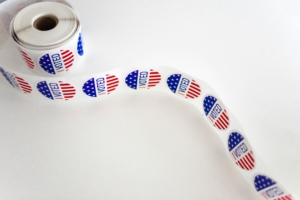
Get In Touch
There's a world of Data Insight Opportunity just for you
Harness the power of cultural intelligence to win diverse America. Discover how you can turn insights into impact today!
Are you effectively engaging the youngest – and most diverse – consumer segments in America?
October 25, 2023
Natalie Griffith – Director, Cultural Insights
If not, then you’re not only missing out on forging a connection that will pay dividends for years to come, you also may be missing out on connecting with their parents, who control a sizeable portion of spending today. Keep reading to learn more about how Collage Group can help you better connect with older Gen Z, younger Gen Alpha, and their (mostly) Gen X and Millennial parents.
Read on and fill out the form for an excerpt from our
Engage Gen Alpha & Younger Gen Z and Create a Lifetime of Brand Loyalty presentation.
There are currently more than 62 million American parents living with children under 18. These individuals constitute an outsized opportunity for brands as they’re making spending decisions for both themselves and their kids. As kids in America reach majority minority status, it’s becoming harder to know how to authentically connect with kids (and parents) of different cultural backgrounds.
To fully capture the attention of parents and kids today, organizations must learn to speak to and connect with this newest generation of families.
Collage Group’s Parents & Kids Program offers organizations the insights they need to fully understand today’s modern families and how they differ across race, ethnicity, and generation on important issues and topics, at both the consumer and category level. The fifth presentation in the Parents and Kids program, attached here as a webinar replay and PowerPoint, provides primary research on kids 6-12, as well as their parents. This research will ensure organizations appreciate the full picture of the modern American family.
Key Insight #1: Gen Alpha and Gen Z are the most racially and ethnically diverse cohorts of Americans to date. Gen Alpha is the first majority-minority generation, with only 48% of the cohort identifying as non-Hispanic White.

Context:
The increase in interracial and interethnic marriages over the past 50 years, steady immigration, and higher birthrates among multicultural women have led to an increasingly diverse population of younger Americans. In turn, the youth is coming of age surrounded by and expecting greater diversity in all aspects of life.
Action Steps:
Key Insight #2: For kids today, standing out is the new fitting in. And differentiators have shifted too – kids view their mindsets as more differentiating than traditional markers like looks or skin color.

Context:
Kids today have grown up with diversity as the norm, so differences based on skin color or ethnicity do not stand out as strongly for them as they did for previous generations of kids. Instead, differentiators like mindset and interests are more prominent.
Action Steps:
Key Insight #3: Today’s kids, especially girls, are eagerly pushing the boundaries and even rejecting the very premise of gendered play. This pushback goes well beyond the superficial elements such as packaging and shelf placement: Kids today firmly believe that toys are created for all.

Context:
The fact that young girls today are rejecting gender-based stereotypes in play is a logical extension of the decades’ long conversation around gendered roles and expectations. An incremental, yet powerful shift in higher education and in the workplace is erasing the lines between traditionally “gendered” careers. In popular culture, strong female-lead characters are defying the stereotype of a dainty damsel in distress. And many parents today deliberately choose to avoid such stereotyping. This shift is both lauded by the voices promoting gender equality and derided by more conservative critics.
Action Steps:
Contact us at the form below to learn more about how you can gain access to these diverse consumer insights and much more in our Cultural Intelligence Platform.
Recent Posts
Harness the power of cultural intelligence to win diverse America. Discover how you can turn insights into impact today!
Stay Informed
Email *:
MARKET RESEARCH
SOLUTIONS
fluen.ci App for Cultural Insights
Consumer Research Data & Tools
RESOURCES
Webinar & Events
ABOUT
Who We Are
Collage Group is a certified Minority Business Enterprise (MBE) by the National Minority Supplier Development Council (NMSDC).
©2023 Collage Group

4550 Montgomery Avenue
Bethesda, Maryland, 20814
(240) 482-8260
Stay Informed
Email *:


Collage Group is a certified Minority Business Enterprise (MBE) by the National Minority Supplier Development Council (NMSDC).
©2023 Collage Group
